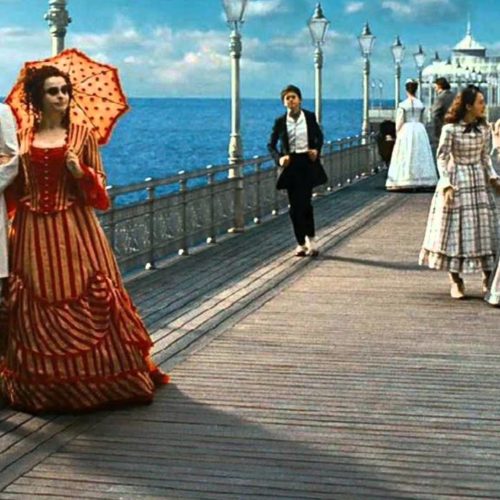


It’s the Dover Quartet, the frst residency of its kind.
But how will it function when lessons are online?
The press pack doesn’t say.
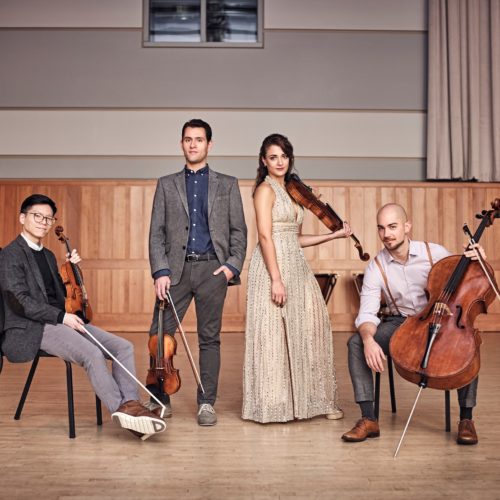
The quartet members are all Custis graduates: Bryan A. Lee (Violin ’11), Joel Link (Violin ’11), Milena Pajaro-van de Stadt (Viola ’10, ’11), Camden Shaw (Cello ’10, ’11).
UPDATE: And then the cuts kick in.
Message from English National Opera:
We’re excited to announce ENO Breathe today, our partnership with Imperial College Healthcare NHS Trust to develop a singing, breathing and well-being programme for COVID-19 recovery patients.
Coronavirus survivors are experiencing a variety of medium and long-term difficulties – including breathlessness, fatigue, cognitive dysfunction and anxiety.
Bringing together medical and musical expertise, the programme will offer tools for self-management, particularly for those patients who are suffering from breathlessness and the high anxiety this produces.
Read more .
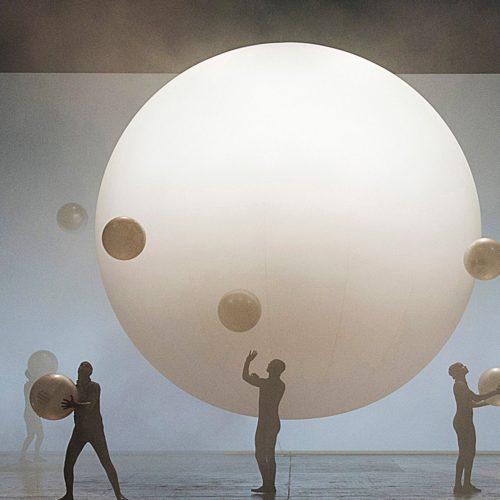
Experiments conducted by Brass Bands England suggest that their cornets and tubas are safer than previously thought.
Laboratory-based experiments took place in the clean room facilities of Modular Sterile Development, based in Rossendale, on Wednesday 1 July and involved a selection of instrumentalists. These included Russell Gray (cornet – pictured above taking part in experiments), Matt Routley (BBb tuba), Jef Sparkes (euphonium), Keith Muggeridge (baritone), Mark Peacock (cornet), Paul Coupe (trombone) and Chris Hardy (Eb tuba), performing in an environment similar to a hospital operating theatre and having particle emissions counted by sophisticated laser particle counting equipment that can measure particles and aerosols to 0.3 microns – around 250 times thinner than a human hair.
The particles released from a brass instrument are split into two categories – droplets and aerosols. Droplets are anything larger than 5 microns (a sixteenth of a human hair) in diameter, which fall to the ground quickly, while aerosols, are smaller than 5 microns and can’t be seen with the naked eye. These aerosol particles float on the air currents and can remain there for hours or even days. This ability to remain airborne for a long time is the reason aerosols pose such potential risks to brass bands, which often rehearse in poorly ventilated spaces. This study first looked at how many particles are released by various brass band instruments, ranging from cornet to BBb bass. While both aerosols and droplets were produced, far fewer droplets were seen than aerosols. The type of brass instrument didn’t change the number of particles released significantly and the likelihood is that the individual player makes more difference than the choice of instrument. However, the experiment also looked at the number of particles released when players breathe (without their instruments) and the results showed that observably fewer particles were produced when playing than when breathing alone….
Read on here.
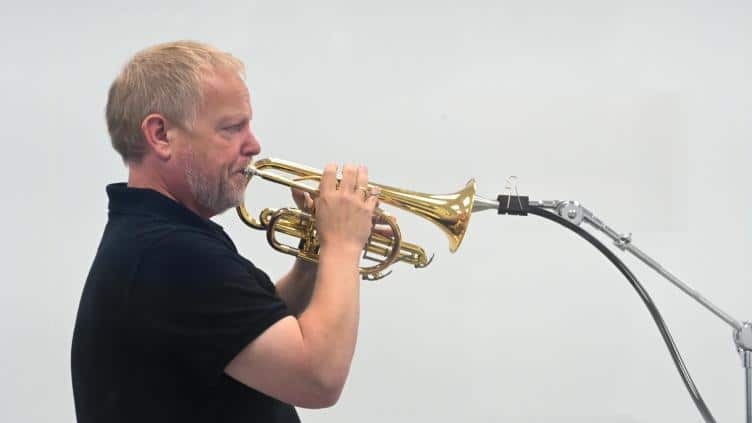
This is the Mancinelli Opera House in Orvieto, rehearsals for the Barber of Seville.
The wind players are being boxed into wood and plexiglass cages arranged in an L shape.
The acoustic result, we’re told, is not bad at all, although the remoters instruments struggle to get heard.
The cages are built inexpensively by a local carpenter in Orvieto.
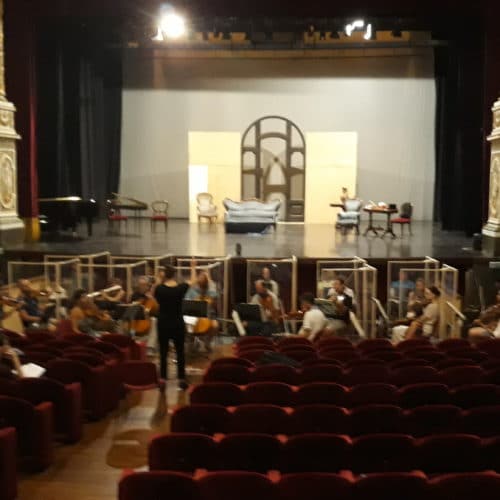
A thoughtful piece by our Toronto pal Michael Vincent:
What do you do when an entire art form becomes a health risk?
The good news is, the classical music industry has adapted to changing market conditions before. Over the past half-century, it has endured the Small Pox, Cholera, and Spanish Flu.
Fast-forward to 2020, and the coronavirus has hit the events sector with the calamity of the decade (perhaps century). What initially looked like a localized pandemic isolated in China, has become a global existential crisis, stumping some of the world’s smartest viral researchers.
The most critical question is when does this pandemic end? The short answer is, it may not for a long time. Even with a global race to develop a vaccine, it may take years to develop, if ever. The SARS vaccine took 20 months. Flu vaccines are only partially effective, and an AIDS vaccine has never been found. Scientists are hard at work, but we should not wait for one to move forward.
Many of the changes facing the events industry appear to be built on the hesitation surrounding contact with the virus through touch or in its aerosolized form.
There are trends supporting the de-globalization of the arts, at least currently, and a new focus that will see digital productions grow exponentially. For example, people are leaning heavily into digital infrastructure and communicating/interacting via digital mediums. This facilitates online connectivity — at least in a memetic capacity.
So what does that change potentially look like? It’s the end of globalization, basically….
Keep on reading here.
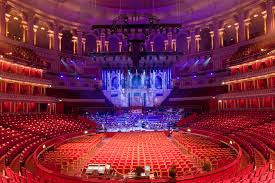
By its signature singer, Fairouz.
Give me the flute and sing because singing is the secret of life
and the murmur of the flute will outlast even the end of existence…
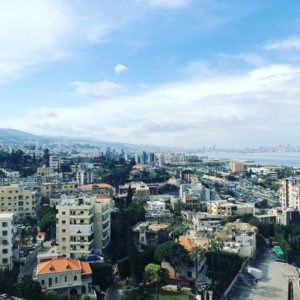
Chicago pianist Lori Kaufman shares her experience of what made Leon Fleisher the most influential piano thinker of our time:
In the assortment of obituaries published online and in print this week, writers spent most of their time describing a pianist who overcame the devastating difficulty of losing the ability to play with his right hand, and the treatments he endured to remedy, and ultimately, transcend that. But what most cannot define is the massive contribution Leon Fleisher made to piano playing, and why he should be remembered as a two-handed pianist, far more than as a one-handed humanist. Yes, he reinvented himself in the most poetic way possible, yes his life story is a formidable example of human triumph, but we cannot forget what he accomplished IN ADDITION to all of that. The impact he had on almost a century of pianists everywhere was universal and indelible, but what makes his departure such a hole too big ever to fill?
In all discussions of Leon Fleisher the teacher, there is a certain mystery and surrounding just what made him so revered by his students. Nobody outside of Room 413 at Peabody really knows what happened inside of Room 413 (now renamed Room 411C). The myths (he will talk about the cosmos!) and inaccuracies (he is not warm with his students!) went around and around so when you first show up, you have no idea of what to expect and are even shocked that he remembers you from the audition.
Most of what people think they know about Mr Fleisher is either wrong or cannot be easily explained. The way I used to analyze it, is that most teachers give you the finishing touches on a piece, they clean it up and spit on a rag and polish it to a sheen so you can put it in your pocket and on your list of rep. Leon, however, did not give you the finishing touches, he gave you the beginning touches. He got you to stop playing and start thinking, thinking about how to approach the piece from the inside out. A recalcitrant Jew, Mr Fleisher was always delighted by any kabbalistic reference so I will mention one that we spoke about: The first book of Genesis is usually translated as “In the beginning…” but the Hebrew word B’reishit actually means something like “In the midst of the beginningness of the beginning times before time had even started..” and that mystical beginningness was exactly the place where Leon the musician spent his life, and exactly the exercise that Fleisher the teacher demanded of his disciples.
What was the composer thinking as he methodically put these enigmatic dots on paper, what was the direction, weight, texture, energy, impetus, color, of each note, where was the note going, what had this note seen, who had this note loved and lost, what would give this note its ultimate redemption, what was the space between each beat, how must we give the impression of elongating that space, or contracting that space, or bridging that space, or multiplying that space, endlessly stretching a silken thread from the first note to the last, creating world upon world until, as in Genesis, finally, And There Was Light and God said It Was Good, so that one’s entire performance felt to the audience like each hair on their heads were being pulled, inexorably, (one of his favorite words) toward the stage.
One of the most misunderstood rumors about Mr Fleisher is that he never demonstrated while teaching. Yes, he had two old battered Steinways alongside one another and we would all sit in a ragged circle, nestled against the pianos yet simultaneously afraid to touch them, and yet he never had a student sit at one and he at another, UNLESS, we got lucky enough to play a concerto on a rare day where he bestowed the ultimate gift of playing the orchestra part. (!) Unlike most teachers, who play a passage and then ask the student to copy them, he had a very different and unusual approach: If he wanted to show how the music should be played, he would amble over and sit right next to you, position his left hand on the high soprano register, and place your right arm snugly on top of his left arm and then play (yes, with his left hand he could play any right hand part in any piece). So instead of listening and copying, we were taken on a magical ride to FEEL what it felt like to crawl right inside the center of this music he loved so much. Normally, the handicapped person would be carried through by the able person, reliving an experience through touch and imagination. No, in reality, WE were the handicapped, who rode on his arm like a magic carpet, zooming to the outer worlds where gravity doesn’t exist and the air gets so thin you can hardly breathe. But what was it that he could do on the piano that NONE of us could ever replicate on our own?
For the answer to that, fortunately, we have some evidence. And an accomplice. When George Szell met Leon Fleisher in the mid 1940’s, it was the start of one of the greatest artistic collaborations the world has ever known. In the young Fleisher, Szell met his match. He finally found a pianist who could make his ten fingers sound as clear and defined and energetic and driven as he made the instruments sound in his orchestra. These concertos succeed so brilliantly because there is no soloist and an orchestra, there is the greatest orchestra in the world made BETTER by adding ten miraculous instruments. Everybody has had the experience of listening to Szell conduct a piece and suddenly hearing every single instrument clearly speaking as if directly into your own ear, and yet playing together with an indivisible precision. It is the ultimate sleight of hand, at once we hear the whole greater than its parts, and the parts greater than the whole — the performance literally an open book, the composer’s score in blazing black and white. This was the embodiment of Fleisher’s catchphrase “support the composer” – everything you do must be in service to transmit each black dot the way it was intended to be heard, but alas, so few people can actually do it.
In Szell’s orchestra, Fleisher heard the ideal that he already had in his own mind. But with Fleisher, Szell got something even better – someone who could actually do, effortlessly, with his two hands what Szell heard in HIS own mind. Fleisher’s supreme talent was that he had the rare ability to make every single note of any piece come alive with blinding clarity. If you listen to Rachmaninoff’s Paganini Variations, for example, the piano starts out as though it’s just one more instrument in Szell’s magisterial ensemble, the incisive melody blending in perfectly. Before you notice, the piano gets more and more significant, and when the individual solo interludes explode out of the string and wind sound, it sounds as organic and inexorable as a tsunami, and yet a tsunami where every individual drop of water is visible! Szell and Fleisher reinvented the soloist/ accompanist paradigm COMPLETELY. Take Mozart K. 503: Listen carefully to Fleisher’s Alberti bass, and instead of a series of four equal, rather repetitive eighth notes, you will hear each note with a different shape, sound, texture, all perfectly balanced and yet striving in completely different directions. In those simple musical gestures you will hear Papageno looking for his Papagena, Count Almaviva misbehaving, Figaro courting Susanna, Guglielmo plotting, Don Giovanni causing drama, all of Mozart’s characters flashing by in a few measures, and yet, instead of chaos, it’s harmony and humanity and humility.
Szell must have been gobsmacked to finally meet someone who could do with his ten fingers what the conductor could do with a whole orchestra – make every note of every part sing out so clearly that no audience would be able to resist.
And that is why, even after sixty years, his Beethoven and Brahms concerto recordings (as well as the above mentioned) have not been surpassed, and never will be. Thus, the testament he leaves us is what he did with his two hands. We can and should talk about Leon Fleisher’s incredible triumph over the handicap that threatened his existence, but let’s not let that be the headline. As impressive and laudable as that is, what he accomplished with two hands, and the lessons we received in Room 413, from one of the greatest pianists who has ever graced our planet, are so much more than that.
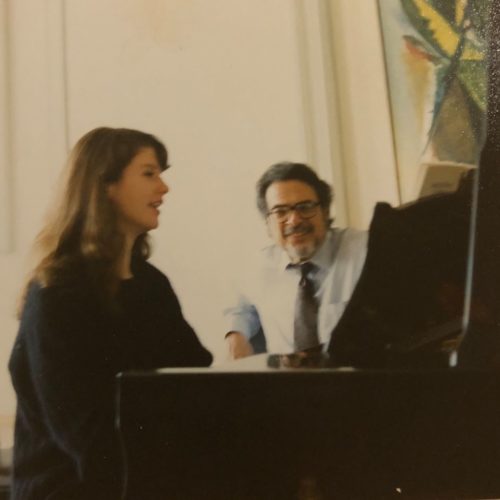
Scherzo reports the death of the Galician mezzo-soprano Inés Rivadeneira at the age of 91.
Dhe gave up the stage in 1973 to become one of the first professors at the Escuela de Canto in Madrid.
Her recording of El amor brujo has long been considered a reference performance.
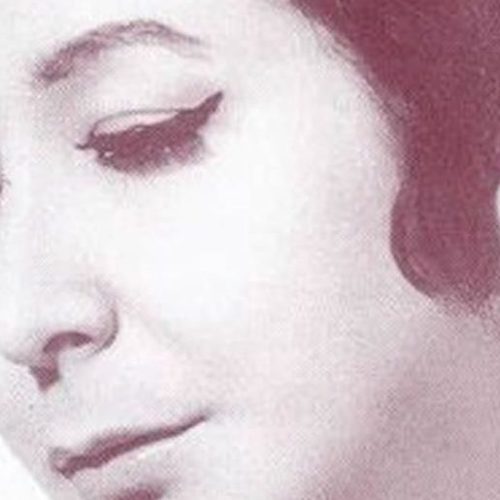
Merkur critic Markus Thiel is bowled over by Salzburg’s makeshift Cosi fan tutte:
…. this sextet: Marianne Crebassa, a Dorabella between cunning, young girl and dark erotic. Elsa Dreisig, a Fiordiligi, of unconditional (sometimes a little more firm) intensity. Johannes Martin Kränzle, who, as Don Alfonso, is not only a sovereign playmaker, but observes the couples’ goings-on with skepticism, increasing despair and derangement – and all this accompanied by an abundance of vocal nuances. Bogdan Volkov’s cleverly guided, flexible Ferrando tenor and Lea Desandre’s finely lyrical, never beastly Despina belong to this ideal ensemble, as does Andrè Schuen, whose virile voice Guglielmo fluctuates between disbelief and defiance. The fact that they all convey the 130 minutes as truly as if the piece happened for the first time is the miracle of this performance.
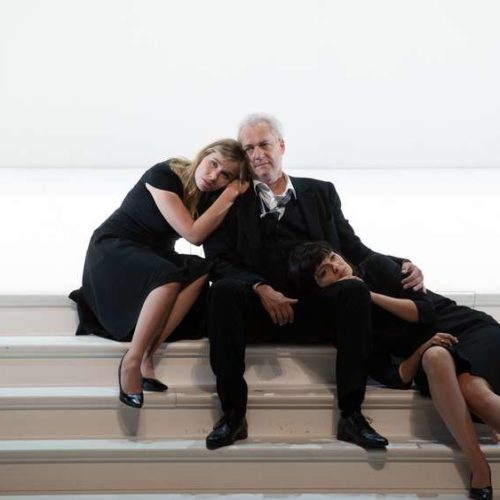
Elsa Dreisig, Johannes Martin Kränzle, Marianne Crebassa.© Photo: Monika Rittershaus
Read on here.
The city is frontrunner for the title in 2025.
Short memories?
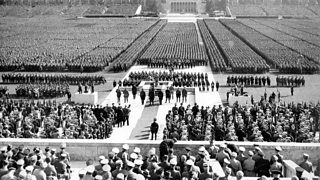
Other City of Culture candidates are Chemnitz (formerly KarlMarxstadt), Hanover, Hildesheim and Magdeburg.
Restricted to 400 ticket holders in its concert hall, the Finnish Radio Symphony Orchestra has persuaded the national broadcaster YLE to run all of its concerts live on television.
Why couldn’t the BBC think of that?
Press release below.
The Finnish Radio Symphony Orchestra begins its autumn season on 4 September under somewhat exceptional circumstances. Audiences are now permitted in the hall again, but to ensure sufficient distancing, only around 400 tickets will be sold.
In order to serve other would-be listeners, the Finnish Broadcasting Company (Yle) is broadcasting FRSO concerts live on its Areena and Radio 1 channels and will be showing them on Yle Teema throughout the autumn season.
The concert repertoire has been modified to ensure the safety of the musicians on the platform. The concerts beginning at 8 pm will have no interval and will last about one hour.
“The orchestra is keen to get back on the Helsinki Music Centre platform,” says Chief Conductor Hannu Lintu. “Being face to face with a live audience is of primary importance to us. Modifying the repertoire to suit the prevailing conditions has been not only challenging but extremely interesting. The musician friends from abroad who were originally booked to visit us have all been incredibly understanding and flexible. It’s a great honour to have them with us.”
Karita Mattila, Elim Chan and Kent Nagano among the stars of the autumn concerts
The FRSO is keeping a close watch on the official directions concerning the Covid-19 pandemic and is prepared to adjust its concert repertoire accordingly. For this reason, it is first announcing the programmes only for the September and October concerts.
The theme of the opening concert on 4 September is the inspiring and diverse effect of cultural history on orchestral music. Hannu Lintu will conduct FOG, a new orchestral work by Esa-Pekka Salonen, Stravinsky’s Pulcinella suite, and Britten’s Nocturno with Tuomas Katajala (tenor) as the soloist.
Karita Mattila will sing Wagner’s Wesendonck Lieder on 9 & 10 September, and Elim Chan – one of the most exciting new-generation conductors – will conduct works by Anna Clyne and Kaija Saariaho on 23 September….
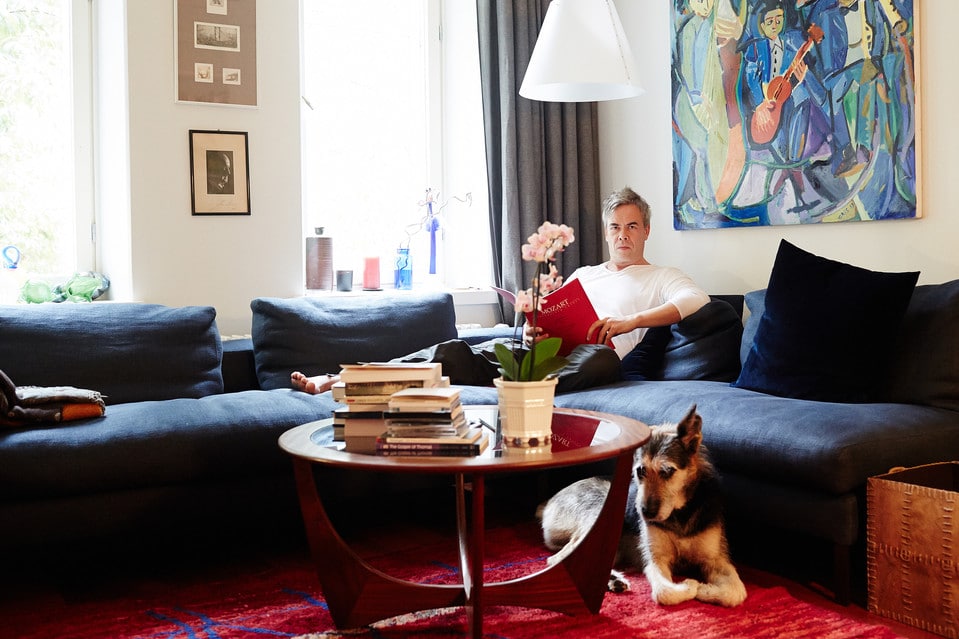
conductor Hannu Lintu